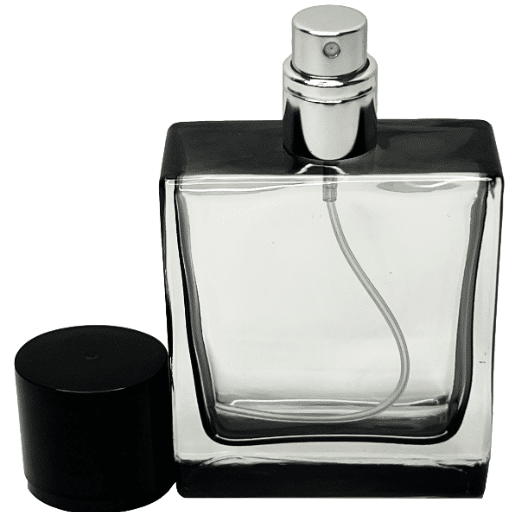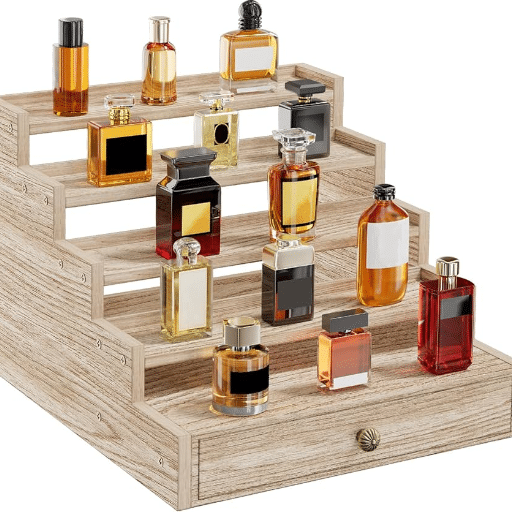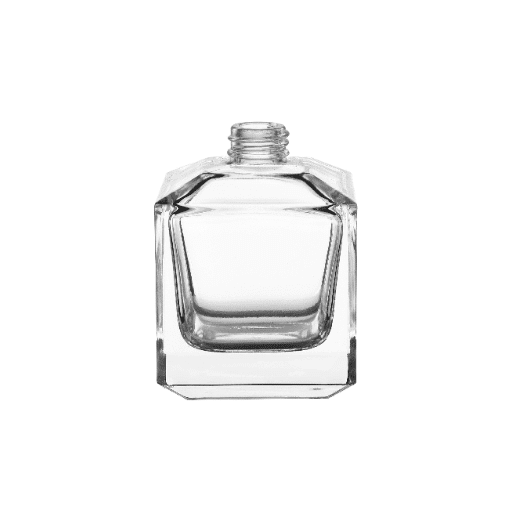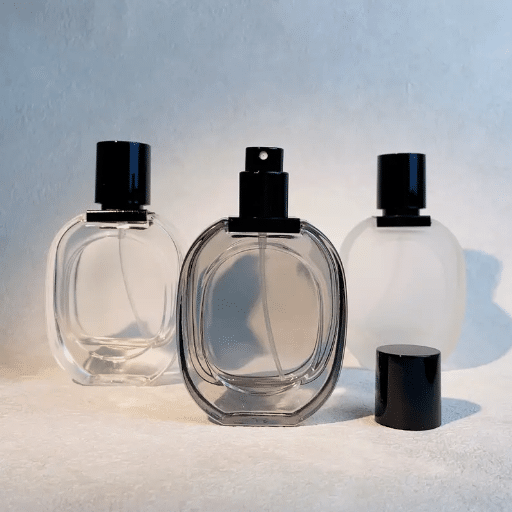The daunting task of transferring perfume from one bottle to another may seem intimidating, but with the right tools and methods, it becomes remarkably easy. Whether it’s downsizing your favorite fragrance and refilling it into a travel bottle, rescuing the last drops of a much-valued scent, or simply exchanging bottles for any occasion, this knowledge will save on the wasted time of doing it the wrong way. The guide will show you everything about each step, ensuring a smooth and mess-free transfer of perfume with no damage to your fragrance. Proceed ahead.
Understanding Perfume Transfer
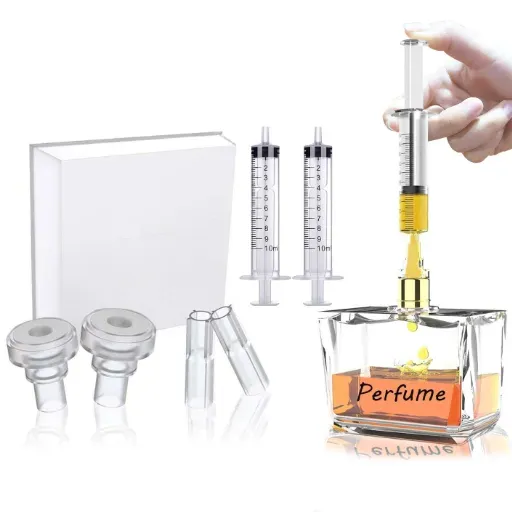
The basic definition of perfume transferring is the act of moving liquid perfume from one container into another, usually for more practical use or for traveling. Quite often, this involves downsizing a large bottle of perfume into a smaller, portable version without compromising the quality of the fragrance. A smooth process is made possible with the aid of the correct tools, such as a refillable travel atomizer or a transfer pipette, which keep spills and waste to a minimum. One successful transfer method emphasises the environment. It therefore adheres to a set of factors about avoiding contamination and retaining the original scent of the perfume. Always treat containers and tools with great care, so that the most significant value of the fragrance remains intact.
Why Transfer Perfume?
Transferring perfume into smaller bottles can provide a convenient way to ensure frequent freshening for those always on the go. These travel cases effortlessly slide right into a handbag, suitcase, or even a pocket, easy enough to apply one’s favorite scent twice or thrice during the day. Moreover, another wonderful suggestion for a travel atomizer is that most airlines put a constraint on liquid quantities, so an acceptable perfume size for travel atomizers guarantees hassle-free carrying. Beyond the convenience, transferring perfume really helps in retail savings as it retains the main bottle for home use, and the transfer bottles are less prone to breaking during travel.
Common Challenges in Transferring Perfume
A major challenge in transferring perfumes is the splashing or spilling of the liquid. In the absence of the right tool, such as a funnel or syringe, it is tough to avoid this. The other challenge is to ensure that the travel atomizer used is indeed leak-proof. Badly made atomizers may allow the fragrance to evaporate over time or, worse, create a mess in your bag. Maintaining the quality and scent of a fragrance is crucial, as improper storage can cause chemical changes to the fragrance due to exposure to air or heat. Cleaning and reusing atomizers can be tricky, as the residues from old perfumes may blend with the new ones and alter their scent. These are some challenges that highlight the need to select the right tools and containers for a safe transfer of perfume.
Necessary Tools for the Transfer
- Funnel: A small and narrow stainless steel or plastic funnel to guide the liquid into the new container without spills. Check to see if the funnel is clean or has never been used for anything else.
- Dropper or Pipette: This is a must-have tool for measuring and transferring precise amounts of perfume without wasting it.
- Atomizer or Refillable Bottle: Choose a refillable atomizer or bottle with a body made from sturdy, non-reactive material, such as glass, for safety. Preferably, opt for one with an airtight seal to preserve the original state of the perfume and prevent accidental leaks.
- Clean Cloth or Tissues: Any lint-free cloth is useful for wiping off spills around the container, on the funnel, etc., thereby maintaining sterility.
- Gloves (Optional): It is recommended to wear clean, non-powdered gloves to avoid contamination from oils or bacteria on one’s hands, thereby allowing the perfume to maintain a clean state.
- Tape and Marker: New containers should be labeled using tape and a marker to ensure accurate identification of perforations when transferring more than one fragrance.
Choosing the Right Bottle for Transfer
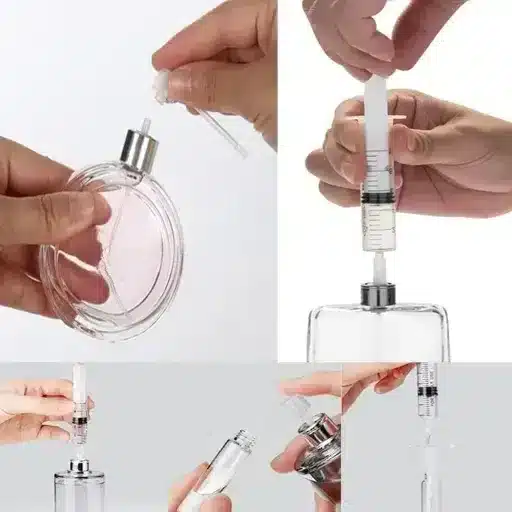
The choice of bottle for perfume transfer is somewhat critical, as it must maintain the original scent. Bottles made of glass are preferred because it is a non-reactive material and will not chemically interact with the content to alter the smell. Dark-colored or opaque bottles are the best to protect perfumes from exposure to light, thereby allowing for preservation. The bottles should have either a snap cap or a spray mechanism such that the perfume does not evaporate to any great extent or leak. To complete the choice of bottles, select the size that maximizes usage; avoid leaving excess space, as this will unnecessarily expose the perfume to air.
Types of Travel Bottles
| Type of Travel Bottle | Material | Capacity | Features | Best For |
|---|---|---|---|---|
| Silicone Travel Bottles | Silicone | 1-3 oz | Squeezable, leak-proof caps | Liquids like shampoo, conditioner |
| Plastic Travel Bottles | BPA-free plastic | 1-4 oz | Lightweight, durable, affordable | Lotions, creams, oils |
| Glass Travel Bottles | Glass | 1-3 oz | Non-reactive, reusable, elegant | Perfumes, essential oils |
| Aluminum Travel Bottles | Aluminum | 2-4 oz | Lightweight, shatterproof, eco-friendly | Sprays, mists, lightweight liquids |
| Travel Atomizers | Plastic/Aluminum | 0.3-1 oz | Compact, refillable, spray dispensing | Perfumes, colognes |
| Pump Travel Bottles | Plastic/Silicone | 1-4 oz | Pump mechanism, hygienic dispensing | Lotions, creams, sanitizers |
| Jar Travel Containers | Plastic/Glass | 0.5-2 oz | Wide mouth, reusable, compact | Balms, creams, gels |
| Travel Tubes | Silicone | 2-5 oz | Roll-up design, squeezable | Toothpaste, gels, hair products |
| Refillable Spray Bottles | Glass/Plastic | 1-4 oz | Fine mist spray, easy to refill | Toners, facial mists, sprays |
Choosing Refillable Spray Bottles
The refillable stock spray bottles are ideal for travelers who want versatility and sustainability in their lifestyle. The size of the spray bottle, the material, and the spray mechanism are all factors worth considering. Glass bottle methods are the best of reusable, eco-friendly options, especially for sensitive products such as essential oils or toners. Plastic bottles are considered lightweight and sturdy enough to be carried along anywhere for use or travel. Fine mist sprays are to be considered when applying facial mists, hair sprays, or cleaning solutions to ensure even coverage. Lastly, look for leak-proof caps and an easy-to-refill design to prevent spills and simplify upkeep. All these make refillable spray bottles a fine choice for environmentally conscious users.
Understanding Atomizers and Their Benefits
An atomizer can also be a useful piece of equipment for developing a fine spray, offering various advantages depending on its use. These are commonly used within the cosmetic, pharmaceutical, and cleaning industries for optimal delivery. For instance, in the field of skincare, atomizers can evenly distribute facial mists or toners for improved absorption and reduced product wastage. Similarly, in fragrance, atomizers evenly project the scent from the perfume, making it work better and last longer. It also acts as a vital device in the medical areas for targeted delivery of medications such as inhalers or nebulizers. Their ability to work skeptically consistently makes the invention of the tool possible in various fields of application.
Step-by-Step Guide to Transferring Perfume
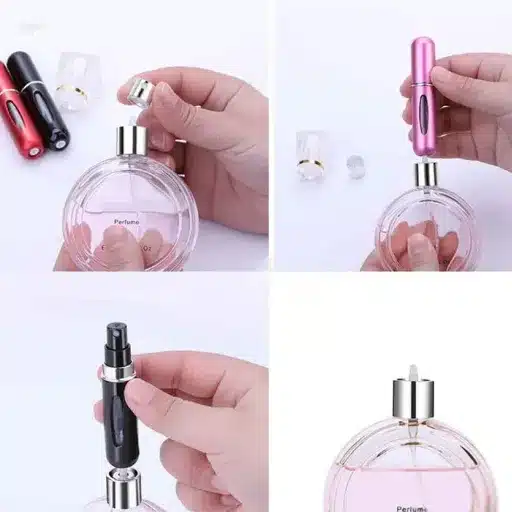
- Gather the Necessary Tools
You would require your original bottle of perfume, an empty refillable spray bottle, and a small funnel or transfer tool, if available. - Prepare the Workspace
Select clean and flat surfaces; otherwise, spills are likely to occur. You can place a paper towel or a cloth to catch any drips. - Open the Original Bottle
Carefully unscrew or take the cap or spray mechanism from your bottle of perfume. Be very careful to avoid spilling anything. - Transfer the Perfume
Pour your perfume into the refillable spray bottle using a small funnel or transfer tool. If you prefer not to use transfer tools, simply tilt your bottle to control the pouring. - Secure the Atomizer
Once filled, always close the atomizer tightly to avoid leaks. Check the mechanism using a test spray. - Store Properly
Store the original bottle and atomizer in a cool and dry place, away from direct sunlight, to maintain scent quality.
Preparing Your Workspace
The entire process of creating an organized and efficient workspace helps individuals accomplish tasks, such as crafting, organizing work, or pursuing personal projects. Begin by selecting an area that is clean, clutter-free, and well-lit, so that it does not cause distraction for the worker and helps them gain focus. Put all your tools and materials in order so that you always need to stretch just a bit to reach for one with your hands; this way, you save time and effort. Containers or organizers with clear labels help keep items well-organized, so they do not get misplaced. These ergonomic factors, including comfortable seats and a suitable desk height, significantly contribute to the overall ergonomics of your workspace. Anything that will remind you of neatness and keeping things organized will do wonders for output quality.
Tips for Avoiding Common Mistakes
Failing to Plan Ahead
Being unprepared can lead to significant delays and errors in processes. Draft a checklist of tasks and due dates for all items that need to be completed on time. Research indicates that planning increases efficiency and reduces errors by approximately 30%.
Overlooking Small Details
A minor error, such as a file with the wrong name or insufficient permissions, could bring everything to a halt. Check and verify all details before proceeding to avoid unnecessary inconvenience.
Ignoring Backup Protocols
Ensure that whenever significant changes and transfers are scheduled, file backups are up to date. According to the data of the National Cyber Security Alliance, at least 20% of data loss incidents would have been avoided if the data had been backed up properly.
Failure to Test the Process
When skipping the test run, one is probably open to unforeseen scenarios later. Loss time that enables running through the incident in a simulated environment to resolve prospective issues in advance.
Poor Communication Among Team Members
Wrong communication leads to confusion and errors. Utilize collaboration tools, hold regular meetings, and document all communication clearly to convey various aspects, ensuring teams stay on the same page and informed.
Underestimating Time Requirements
Everything included in rushing tends to be prone to errors. Ensure it is allotted sufficient time for unanticipated delays, as research indicates that projects invariably extend beyond their original estimates by approximately 20-25%.
Common Challenges and Solutions
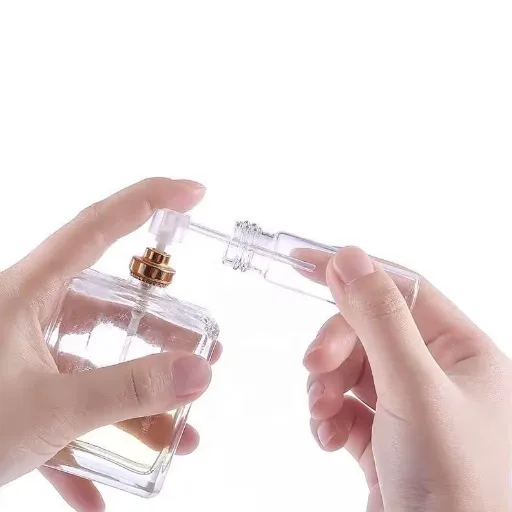
Lack of Proper Planning
Projects without planning can easily go awry. First, draw up a project roadmap with detailed objectives, timelines, and responsibilities, and utilize project management tools to track progress and adjust plans accordingly.
Inefficient Resource Allocation
Burnout arises from overload in work, resulting in inadequate resource allocation, which leads to an undesirable state of productivity. Distribution of tasks according to a fair criterion should be ensured, and an assessment of resource needs should be undertaken frequently. Employ workload management pipelines to strike a balance.
Resistance to Change
Teams might resist adopting new tools or processes. Communicate effectively about the change and provide ample time and resources for training, allowing workers to make a smooth transition on their own. Get them involved so they become stakeholders and will support the implementation.
Failure to Manage Risk
Unforeseen risks can significantly impact project progress without adequate preparation. Conduct a risk assessment at project start and update it constantly. Develop mitigation plans for high-priority risks to achieve minimum efficiency.
Dealing with Spills and Waste
Such an operation would require checks on spills and in waste management to ensure safety, compliance, and the environment were not compromised. Recognize the type of spill or waste product to react accordingly and select the appropriate method of disposal. In the event of a chemical spill, consult the safety data sheet (SDS) of the material, which may issue special instructions or identify hazardous situations. Ensure that anyone involved is equipped with the proper personal protective equipment and has received training in spill containment.
For spills of minor cardinality, use absorbent materials, spill kits, etc., to ensure that they are immediately contained and not spread further into surrounding areas. For large spills, the area should be isolated, and emergency teams should be called in if required. Follow with disposal of the waste collected in accordance with local laws, which may include hazardous waste disposal methods.
Establish waste management procedures to minimize the environmental impact of their activities, emphasizing the segregation of waste, recycling, and proper disposal methods. Promptly assess storage and handling areas for leaks and investigate labeling and sealing issues. Proactively managing spills and waste not only ensures compliance with safety criteria but also reflects sustainable and responsible practices.
Avoiding Contamination of Fragrance
Fragrance integrity requires that utmost care be taken against contamination throughout production and storage processes. Improper handling of fragrance materials, exposure to unsuitable substances, or cross-contamination by another substance can also lead to contamination of a fragrance. For all these, work in a sanitized environment with sterile tools and equipment. All raw materials and container materials must be rigorously checked and accepted for use based on established quality standards. Thus, the procedure for handling should be clearly defined, because if steps are taken to maintain purity at every possible opportunity, the customer gains confidence, which in turn gives credibility to the actual manufacturing procedure.
What to Do If the Perfume Won’t Transfer
Start by evaluating the compatibility of the container and applicator to ensure that the perfume will not transfer. Sometimes, the nozzle or applicator is clogged or incorrectly fitted, preventing the liquid from passing easily. Clean all components thoroughly with a suitable solvent, such as alcohol, to ensure there is no obstruction. Also, check the seal; an over-pressurized or under-pressurized container may impede dispensing.
If the condition remains, consider the fluid viscosity of the perfume. Thicker perfumes may require a different applicator or delivery system, such as a dropper or roller-ball. Some other remedies may include slightly warming the container in lukewarm water to thin out the liquid temporarily. It is essential not to use heat, as this would degrade the quality of the fragrance. As a final alternative, transferring the perfume into a second sterilized container with a compatible applicator could be the best option for continual issues. All tools should always be sanitized to avoid contamination during the transfer.
Maintaining Your Perfume After Transfer
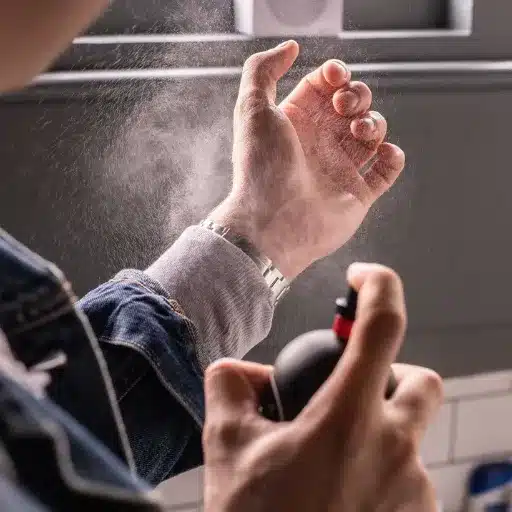
After transferring your perfume, here are some tips that guarantee its quality:
- Store in a Cool, Dark Place: Protect your perfume from direct sunlight or extreme temperatures, as sunlight and heat can degrade the fragrance over time. A drawer or cabinet would work just fine.
- Use a Clean Applicator: The applicator of the new container needs to be clean and sanitized to avoid contamination and keep the scent pure.
- Handle with Care: Vigorous shaking or prolonged contact with air can cause premature alteration of the perfume composition or speed up the rate of its evaporation.
- Seal Tightly: Close the jar or bottle with its respective lid after use to seal in the fragrance and prevent leakage.
Your perfume will greatly appreciate these few steps, and so will you for your time and patience.
Best Practices for Storing Transferred Perfume
Proper Storage To keep transferred perfumes fragranced and of good quality, proper storage is a must. Would you like to know how to store fragrance? Store perfumes in a cool and dark place. The light and heat will degrade perfumes with time. Never place them near windows or anywhere sunlight comes in; the UV rays will break down essential oils and later change the scent. Humidity comes next – always keep your perfume away from the bathroom and any other crazy-high-moisture area to stop any bizarre chemical reaction.
Moreover, choose perfume containers, such as opaque glass bottles or those crafted from another high-quality material, to prevent exposure to light and air. Cooling may help preserve the fragrance, particularly if you reside in hotter climates, but maintaining a stable temperature in the storage environment is best, avoiding extremes on either end. Then, always handle perfume bottles with clean and dry hands and keep them upright; otherwise, they might leak or spill. Simple things like that will make your fragrance last a long time.
How to Refill Your Travel Bottles
Filling travel perfume bottles may be made simple with just a few steps. First, ensure that your primary fragrance bottle and travel bottle are clean and ready for use. If you are using the travel bottle again, rinse it thoroughly and allow it to dry completely to prevent mixing scents or adding moisture. Most perfume bottles come with spray nozzles, so you can use a small funnel or a perfume transfer tool to transfer liquid from the main bottle to the smaller bottle. For travel atomizers, some are designed to refill directly, attaching to the base of the fragrance bottle’s spray nozzle, so you just press down to transfer perfume with no spills. Take your time not to overfill; leave some room for the atomizer to work correctly. Now, put the lid on tightly and test the spray function to ensure it works properly. Following these steps will enable you to carry your favorite aroma everywhere and enjoy it anytime.
Identifying When to Replace Your Travel Perfume
A good time for replacing your travel perfume is crucial to ensuring that you are enjoying the freshest, most intense fragrance experience possible. One of the most important indications is the smell itself; as days pass and the effects of light, heat, and air take hold, the fragrance may vary from how it should be perceived or even fade or become less intense. Another thing to look for is the consistency and color of the liquid, as it may need to be replaced if it turns out to be cloudy or discolored. The average lifetime of a perfume is usually between three and five years, but this can vary depending on its composition and storage conditions. Always store your travel perfume in a cool, dark place to maximize its lifespan and maintain the best quality.
Reference Sources
-
The colors of the smells: the influence of culture and society in the visual design of packaging of perfume
This study explores the cultural and societal influences on the visual design of perfume packaging. It highlights the challenges in visually identifying odors and the role of packaging in communicating a fragrance’s essence. -
Trending copy culture of Bangladesh: Brand product perspective
This research discusses the imitation of branded products, including perfumes, in Bangladesh. It examines the production and distribution of counterfeit perfumes.
Frequently Asked Questions (FAQs)
Q: Can I use a step-by-step guide to transfer perfume from one bottle to another?
A: Definitely! A step-by-step guide indeed removes the mental block that usually comes with the task of actually transferring the perfume. First, under conditions that may require a pair of pliers, pry the sprayer off the original bottle. Align the funnel over the travel bottle and pour slowly. If using a syringe, withdraw the desired amount and fill the travel bottle carefully. The travel bottle must be clean and thoroughly dry before you begin to avoid affecting the fragrance.
Q: Is there a pro tip for decanting perfume into smaller bottles?
A: When decanting perfume, it is best to concentrate and keep a steady hand so you can avoid any spills. The sprayer should be carefully removed from the large bottle to prevent damage to the nozzle. If you are using a funnel, it’s best to have one that fits tightly inside the opening of the travel bottle. To add precision, try to fill in 15-ml increments so that you maintain control over how much perfume you are transferring. A residue in the big bottle might prompt you to wash it with soapy water before refilling, just to ensure there won’t be any mixing of scents.
Q: What should I consider when choosing a bottle for perfume transfer?
A: When choosing a bottle for perfume transfer, consider its size and material. The travel bottle is commonly made of glass or high-quality plastic and should provide an airtight seal between uses to prevent leaks. It should, in the very least, hold 15 ml of perfume for easy handling. The travel bottle should offer a very secure screw or sprayer that keeps the fragrance in. As a bonus point, also consider how easy the bottle is to clean, particularly if you intend to switch between scents fairly regularly.
Q: How can I extract perfume without making a mess?
A: To transfer perfume efficiently and without going overboard, you ideally should use a funnel or a syringe. Should such a case arise that you have to use a syringe, slowly press the plunger and release the perfume into the new bottle. To achieve the best results with your funnel placement, align it carefully by pouring the perfume directly from the funnel into the new bottle and avoiding any chance of overflow. Obviously, having steady hands really pays off, so if this is not your forte, ask for assistance. If there is a minor spill, clean it immediately to prevent any unwanted odors from lingering.

